WORLD CLASS COACHING
A Quick Guide to the 1-4-3-3
By Luca Bertolini
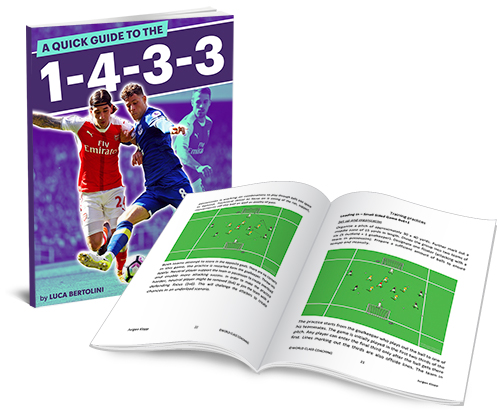
TABLE OF CONTENTS
Part Two
HOW TO COACH THE 1-4-3-3 DEFENDING
DEFENSIVE EXERCISES
DEFENSIVE SMALL-SIDED GAMES
HOW TO COACH THE 1-4-3-3 DEFENDING
Exercise 1: 11 v 11 game Exercise 1: 11 v 11 game
Objective: to coach all these defense formations we've discovered during this analysis and to organize a positive transition phase if the possession is won back.
Organization: half field (at least), 22 players (2 goalkeepers included), cones, additional regular goal.
Two teams are placed with a 1-4-3-3 formation inside a space equal to half plus 10-15 yards more and divided into three parts (one again, in two).

Sequence: The goalkeeper of the attacking team starts to build up a possession phase, and the forwards of the defense team run inside the lower part of the middle third.
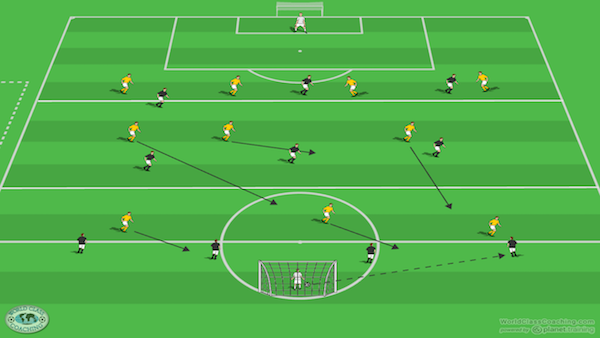
Two more midfielders run inside the upper part of the first third to put pressure 5 v 4, or to force the direction of play toward the side line.
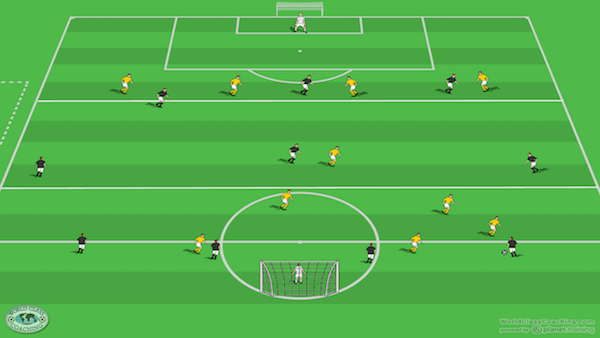
The fullback must be able to pass the ball toward the middle third where the possession team is in numerical advantage 3 v 1 at the beginning.
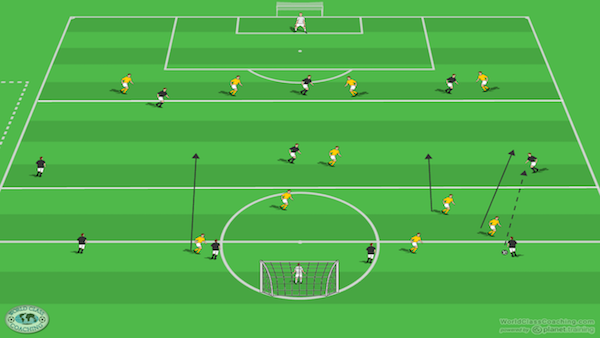
Three midfielders together with one forward must be able to recover the space and create a midfield line of four, to create a numerical advantage 4 v 3.
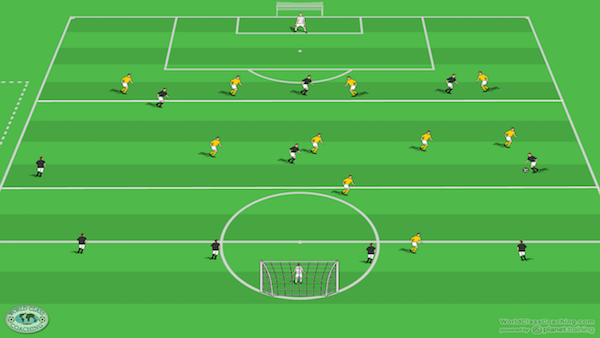
If the attacking team maintains the possession yet, the defense formation must become a 1-4-1-4 to save the first third with a second forward who drops back.

The defensive shape must be organized to have the chance of 2 v 1 duels all over the middle and first third.

If the possession is again maintained by the attacking team, the defensive formation must develop in a line of five with a forward who drops back deep to ensure again 2 v 1 duels.

All the forwards should be potentially double marked as they receive a pass.

Coaching points:
• To put pressure in the final third
• To create a strong side to put pressure
• To recover the positions in the middle third
• To ensure numerical advantages if the possession can't be recovered
• To double mark the opponent in the first third
Exercise 2: 2 v 1 Small Sided Game
Objective: to coach the defensive double marking on the opponent with the ball.
Organization: 40x25 yards pitch, 13 players (2 goalkeepers included), cones, additional regular goal.
The pitch with two regular goals is divided into three areas; 2 v 2 starting situations are played inside two of them, and a 2 v 1 duel is played in the outer area where the goalkeeper starts the sequence.

Sequence: the goalkeeper starts to build from the back, passing the ball to one of the two black players in the lower area; a second defender must run inside to create a 2 v 1 numerical advantage on the ball and a general 2 v 2 duel.

If the first receiver is able to pass the ball forward inside the middle third, where a 2 v 2 is played at the beginning, the two defenders must drop back and one of them must create another 2 v 1 duel on the ball; a general 3 v 2 numerical advantage for the defenders is now created.
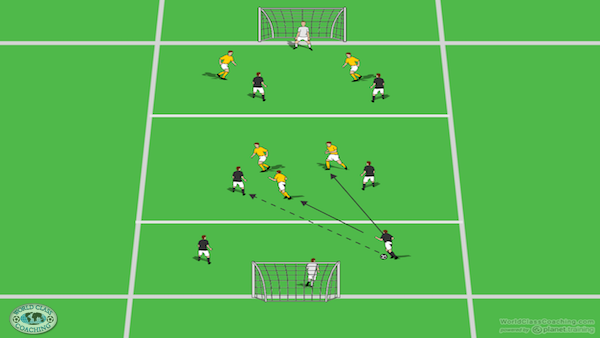
If the players of the attacking team in the middle third are able to pass the ball forward inside the final third, where another 2 v 2 duel is played at the beginning, two of the three defenders must drop back again to create a double 2 v 1 duel against the forwards. A general 4 v 2 numerical advantage for the defenders is now created; the fifth defender must win the second balls.
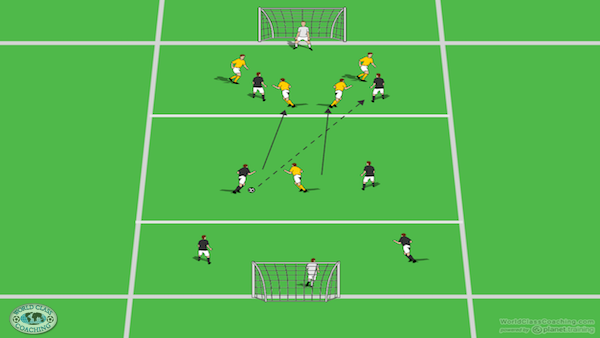
Wherever the defenders can recover the possession, four of them can counterattack and only the last two black defenders can be active in this phase. A general 4 v 2 situation is then created during the transition to attack.
c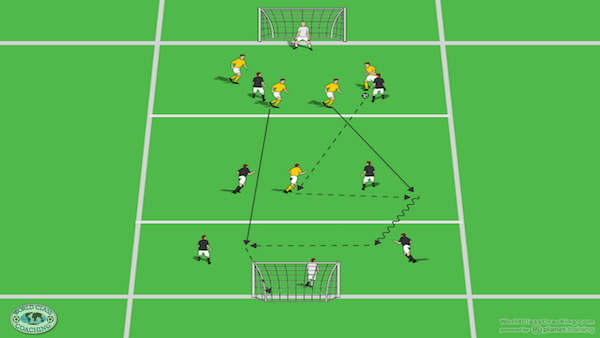
Coaching points:
• How to double mark the opponent from the build up phase till the finishing phase
• How and where to drop back to double mark the opponent
• Create numerical advantage on the ball quickly
• Fast counter attack as the possession is recovered


